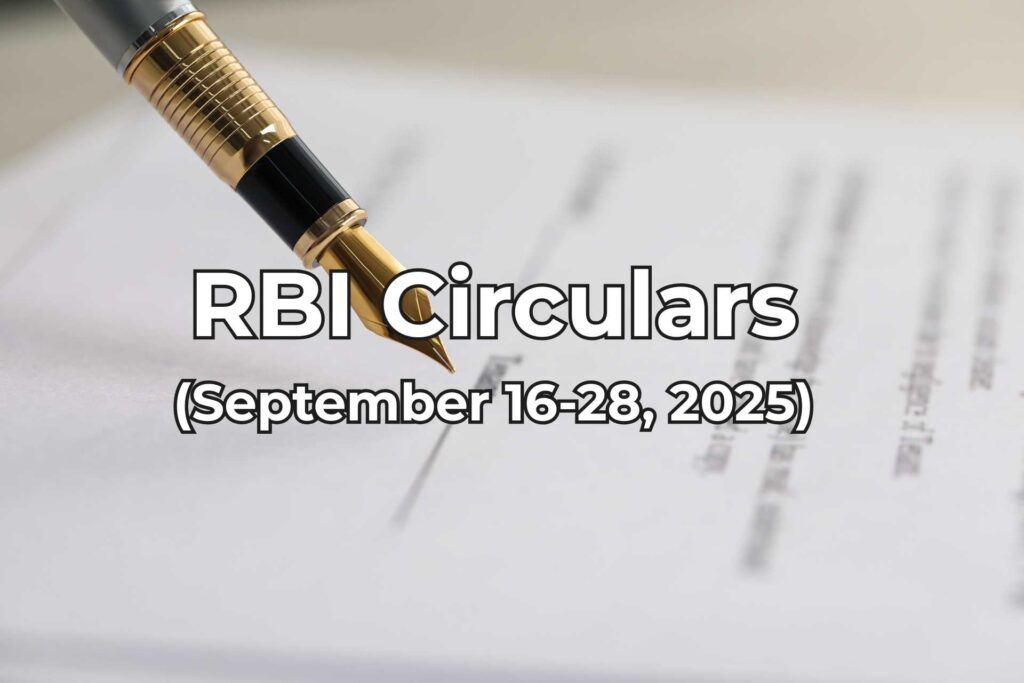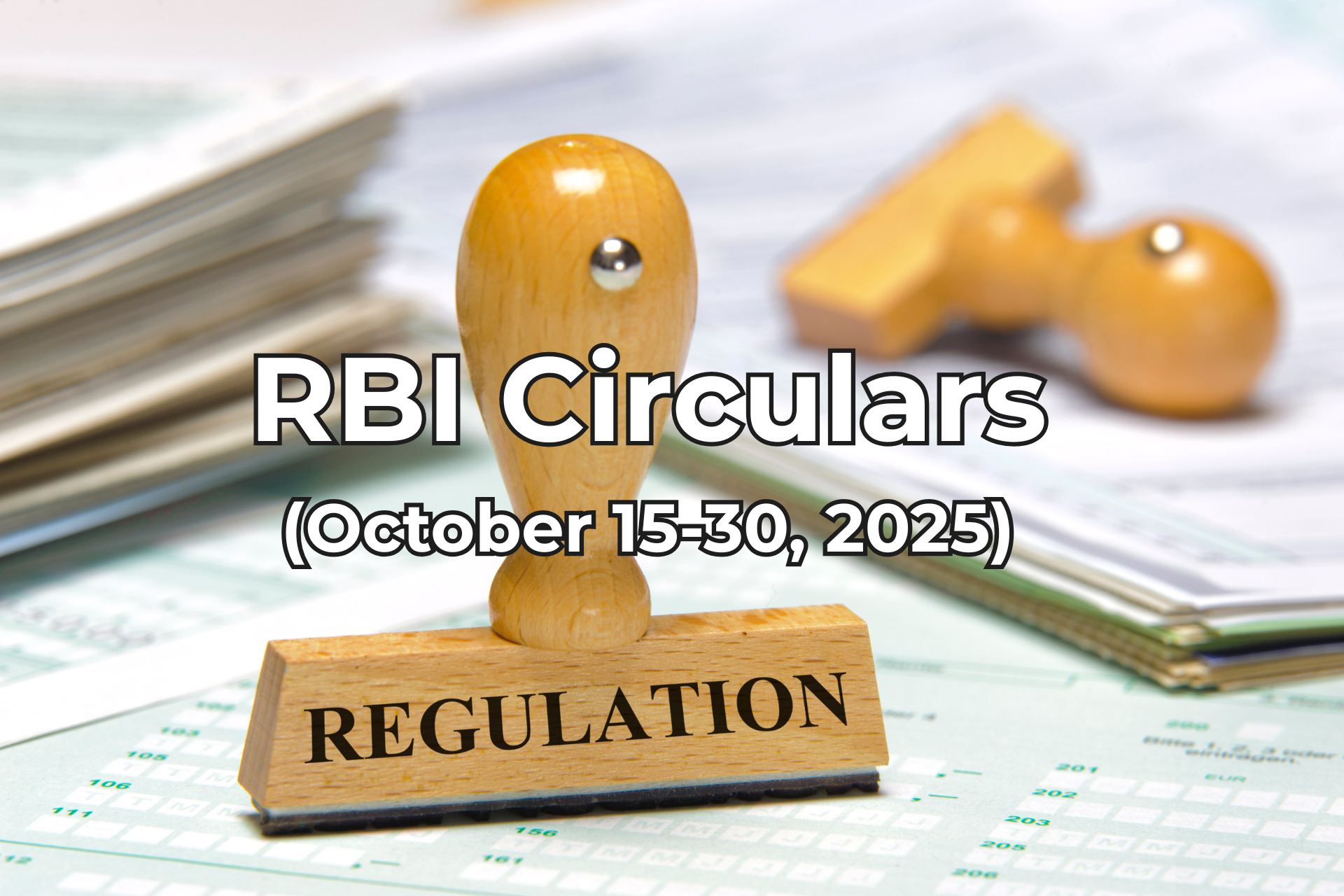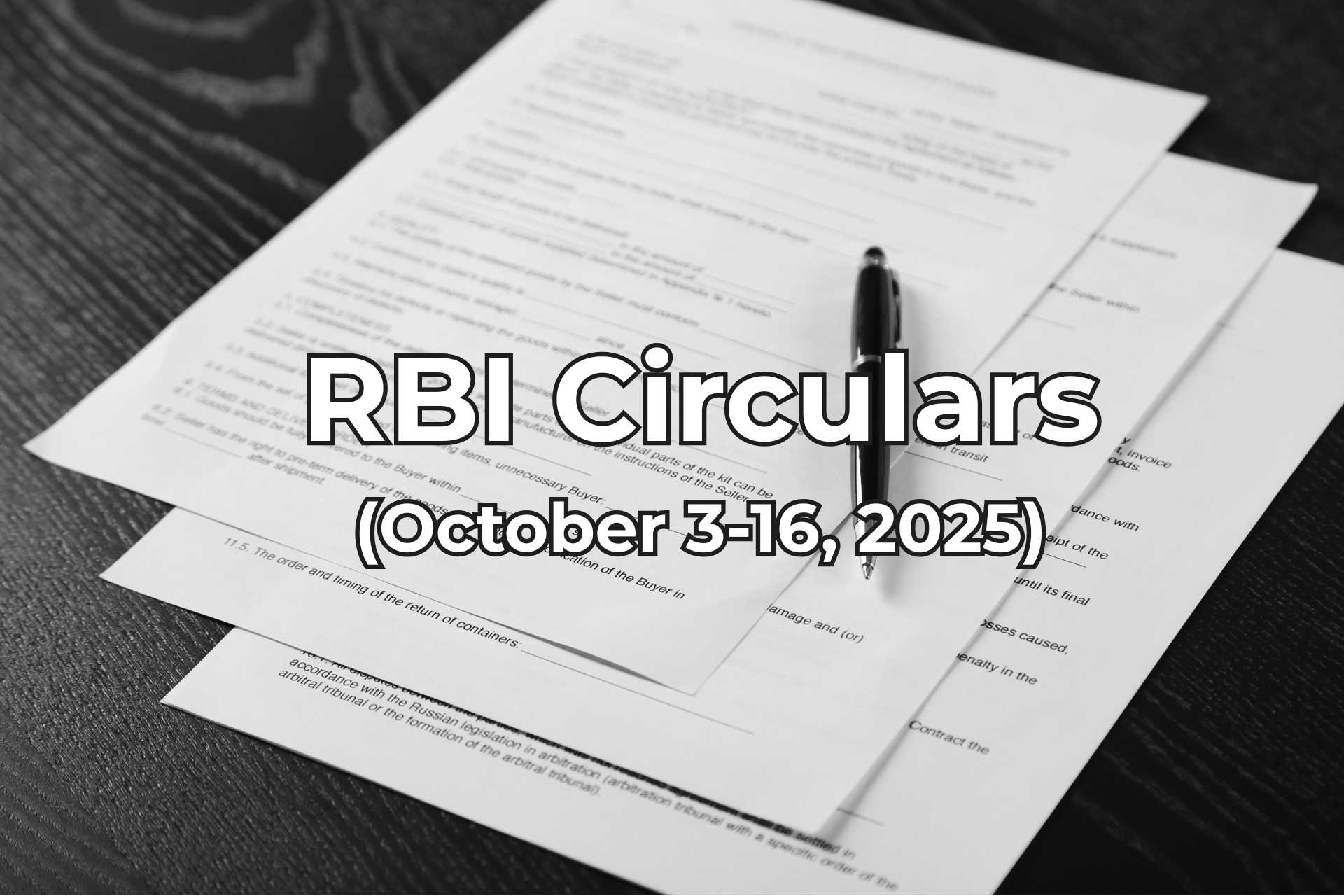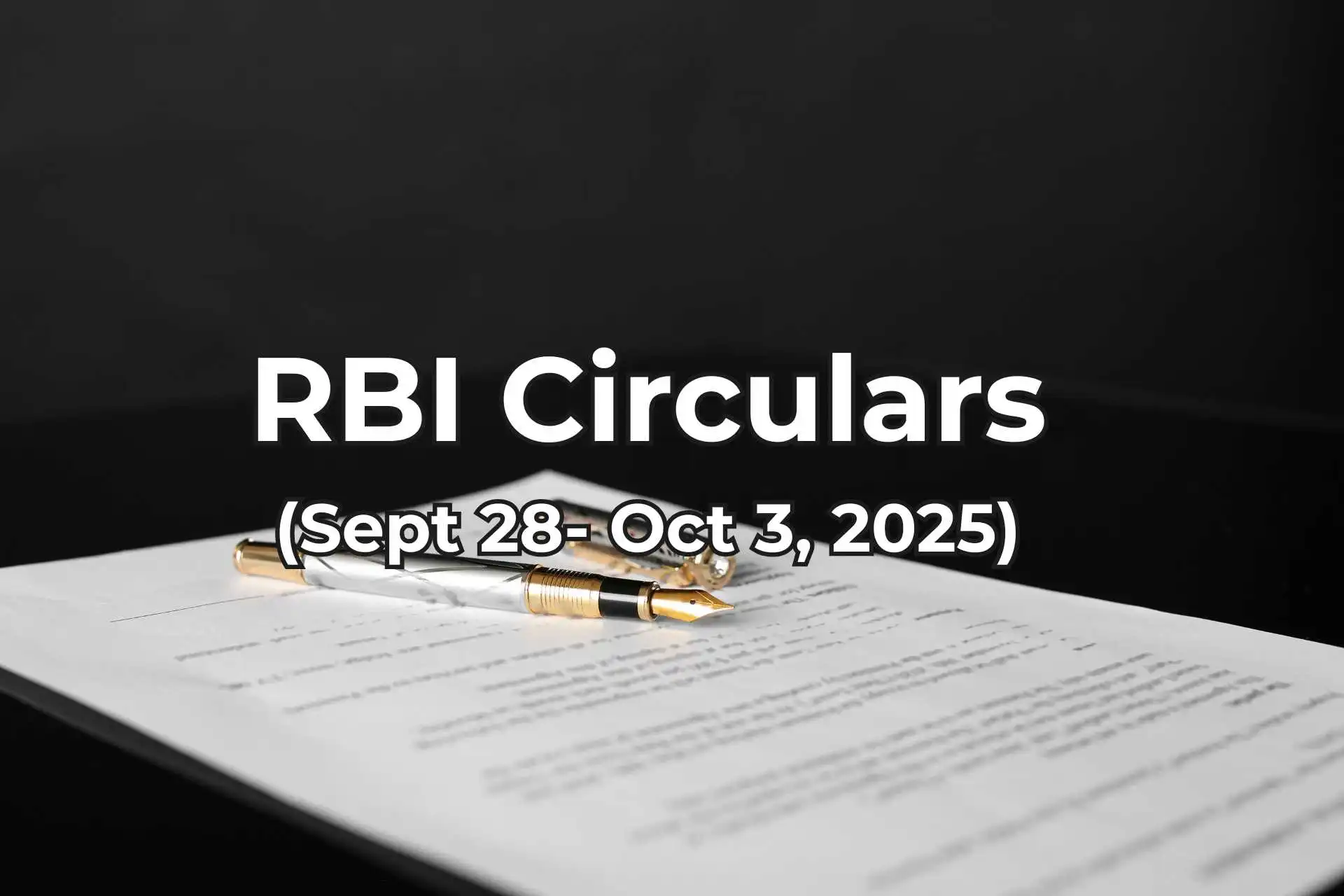We at Finakon track the regulatory changes. We also use AI to create a summary. We are providing a quick overview of the RBI circulars on a weekly basis on our website. The summary is neither exhaustive nor comprehensive. For accurate information, users shall refer to the original circular of the regulator. Finakon shall not be responsible for inferences drawn based on the summary provided.
Expanding Horizons: SPDs Now Eligible for Rupee Derivative Markets
The Reserve Bank of India has expanded the participation framework for Non-Deliverable Derivative Contracts (NDDCs) involving the Rupee.
Standalone Primary Dealers (SPDs) authorised as Authorised Dealer Category–III (AD Cat-III) are now permitted to transact in NDDCs with residents and non-residents, alongside AD Cat-I banks operating International Financial Services Centre (IFSC) Banking Units.
This progressive step reflects RBI’s continued efforts to strengthen India’s financial ecosystem and enable broader participation in rupee derivative markets.
Beyond OTPs: RBI Issues New Directions on Digital Payment Authentication
The Reserve Bank of India has issued the RBI (Authentication mechanisms for digital payment transactions) Directions, 2025, setting the stage for the next era of secure, seamless, and technology-driven digital payments.
Key Highlights:
- Two-factor authentication remains mandatory for all domestic digital payment transactions.
- At least one factor must be dynamic (e.g., unique to the transaction).
- Alternative authentication mechanisms beyond SMS OTPs can now be leveraged, allowing innovation while ensuring security.
- Risk-based authentication encouraged – issuers may use behavioural and contextual parameters (location, device, user patterns) to add safeguards.
- Customer protection first – issuers must compensate customers in full for any losses arising from non-compliance.
- Cross-border card transactions: By October 1, 2026, issuers must implement additional validation mechanisms for high-risk online international card transactions.
These directions come into effect from April 1, 2026, applying to all banks and non-bank payment system providers.
This move marks a significant shift from the OTP-dominated ecosystem, enabling the use of biometrics, device-native security, tokens, and advanced risk-based methods for safeguarding digital transactions.
Strengthening Co-operatives: RBI Approves Investments in NABARD’s SSE
The Reserve Bank of India (RBI) has issued the RBI (Investments in Non-SLR instruments by State / Central Co-operative Banks) Directions, 2025, bringing an important update for the co-operative banking sector.
Key Highlights:
- RBI has accorded approval to NABARD’s Shared Service Entity (SSE), established to serve State Co-operative Banks (StCBs) and Central Co-operative Banks (CCBs).
- StCBs and CCBs can now voluntarily subscribe to the share capital of the SSE.
Investments in the SSE are:
- Permitted up to 5% of owned funds (paid-up share capital + reserves)
- Exempt from prudential limits on non-SLR investments
- Exempt from restrictions on unlisted non-SLR securities.
These directions are effective immediately, modifying RBI’s 2016 framework on non-SLR investments.
This progressive step is expected to strengthen shared infrastructure, efficiency, and service delivery for co-operative banks, enabling them to better serve their members and communities.
Transition in Motion: RBI Announces Special CTS Clearing Ahead of Continuous Settlement
The Reserve Bank of India has announced special clearing arrangements in the Cheque Truncation System (CTS) on October 3, 2025 (Friday), ahead of the introduction of Continuous Clearing and Settlement on Realisation scheduled to begin on October 4, 2025.
Key Details of Special Clearing on October 3, 2025:
- Return Session (for presentations on Oct 1, 2025): 08:00 AM – 10:00 AM
- Special Clearing Presentation Session: 11:00 AM – 03:00 PM
- Special Clearing Return Session: 05:00 PM – 08:00 PM
- All instruments will be accepted only through special clearing; no regular CTS sessions will be held on this date.
- Banks must use Clearing Type “99” and Session Numbers “21” (Presentation) & “22” (Return).
- Adequate balances should be maintained in settlement accounts to meet obligations.
This transitional arrangement ensures a smooth shift to continuous clearing from October 4, 2025, enhancing efficiency in India’s payment and settlement ecosystem.
Faster, Fairer, Simpler: RBI’s New Directions on Claim Settlement
The Reserve Bank of India (RBI) has released the RBI (Settlement of Claims in respect of Deceased Customers of Banks) Directions, 2025 to harmonize and streamline procedures across banks.
Key highlights of the new framework:
- Standardized Process: A uniform approach for settlement of claims related to deposit accounts, safe deposit lockers, and articles in safe custody.
- Time-bound Settlement: Banks must settle claims within 15 calendar days of receiving complete documentation.
- Compensation for Delays:
- Deposit-related claims – interest at Bank Rate + 4% for delayed settlements.
- Locker-related claims – ₹5,000 per day penalty for non-compliance with timelines.
- Simplified Procedures: Faster settlement for accounts with nominees/ survivorship clauses and claims up to prescribed thresholds.
- Customer Awareness: Banks to actively promote the nomination facility and publish required forms and processes on their websites.
These directions will be effective by March 31, 2026 and apply to all commercial and cooperative banks.
This is a significant step towards customer protection, transparency, and ease of claim settlement, ensuring families face minimal hardship during sensitive times.





